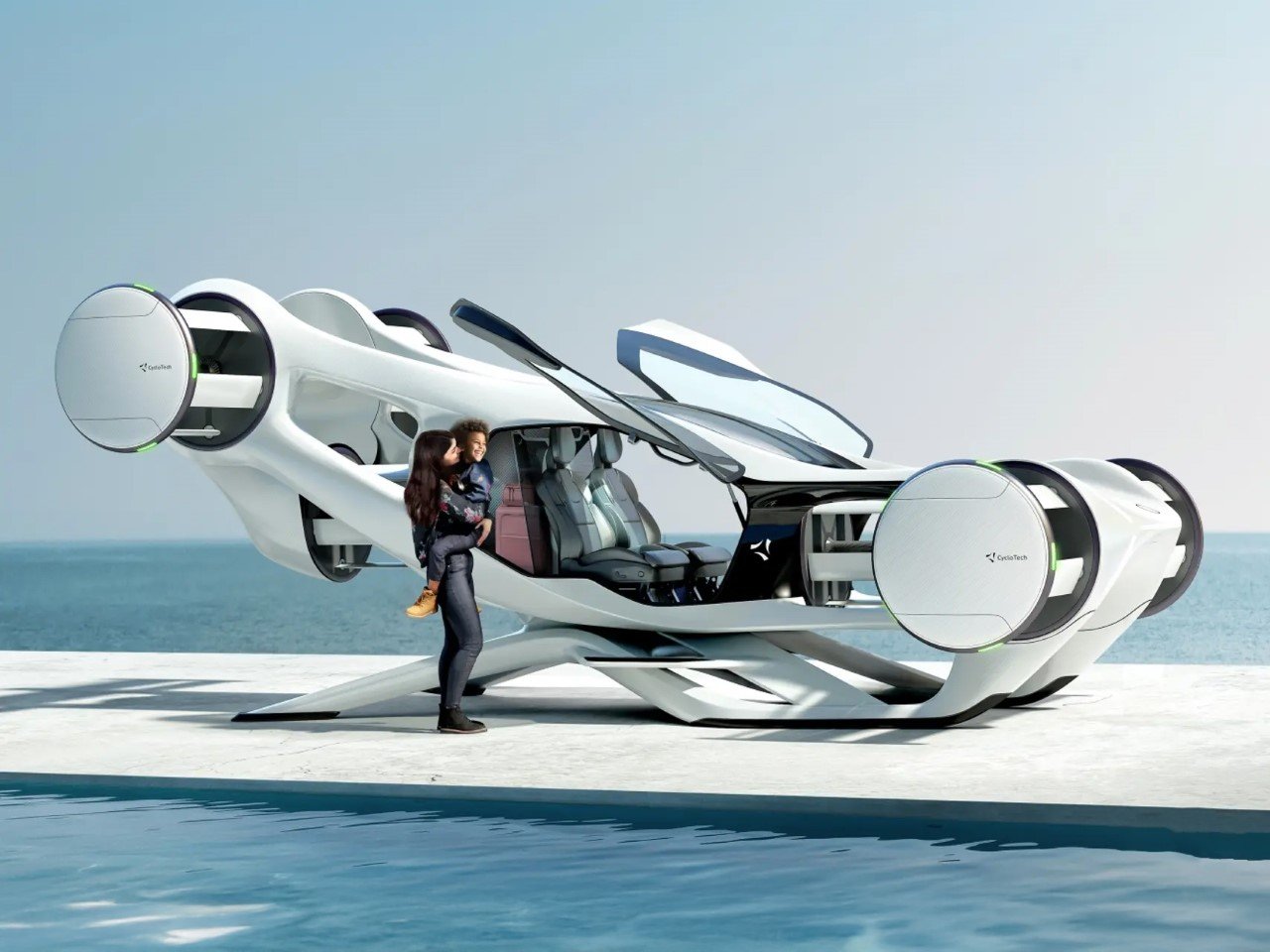
Worlds Weirdest Flying Car Uses Spinning Drums Instead Of Propellers For Better Stability
www.yankodesign.com
Youd be forgiven for mistaking it for a prop straight out of Blade Runner 2049a cross between a drone and a dieselpunk art installation. But the Cyclotech Blackbird is very real, very airborne, and potentially the boldest reimagining of vertical flight weve seen in years. Forget spinning rotors and tilt wings. This machine flies on six mechanical barrels that look more at home in a gearbox than the sky.The Blackbird isnt a full-sized eVTOL yetits a 750-pound demonstrator with zero seating and all the raw, experimental energy of a garage-built prototypebut its making history as the first aircraft ever to fly using six Cyclorotors. If that sounds like a new indie rock band, lets get technical: Cyclorotors are essentially horizontal barrels with a rim of paddle-like blades, each capable of tilting mid-spin. Think Voith-Schneider Propeller meets Da Vinci sketchbook.Designer: CycloTechJust looking at it, it feels counterintuitive. Helicopters adjust pitch on long, spindly blades rotating around a central mast. Cyclotechs system instead manipulates the tilt of short airfoils housed inside rotating drums Im in half minds to throw my clothes in and expect them to dry. The whole mechanism is a throwback to the swashplate designs of classic rotorcraft, but here, the blade adjustments are so rapid and precise they can redirect thrust 360 degrees on the flyliterally. Unlike conventional props that need to spool up or down to modulate thrust, Cyclorotors shift airflow direction on demand by altering blade orientation. Thats not a marginal upgradeits a different language of control.What does that mean in the sky? Micro-adjustments to keep hover stable in gusty wind. Immediate lateral thrust without banking. Redundancy across multiple axis-aligned rotors. And a footprint compact enough to not look totally dystopian on a rooftop pad. The current prototype has four Cyclorotors at each corner and two more mounted horizontally under the nose and tail. This six-pack layout allows the aircraft to twist, slide, or climb without angling its bodyideal for surgical maneuvers in crowded airspace.But lets not gloss over the awkward bits. Cyclotechs voodoo barrels are mechanically complex, with a moving-part count that might make aerospace engineers sweat. And the blades, while arguably less intimidating than traditional rotors, still look like they could julienne a bird mid-flight. Theres also the looming reality that this thing wont hit consumer or commercial markets before 2035an eternity in eVTOL years.Yet Cyclotech isnt sprinting to market with air taxi dreams and urban mobility decks. The real play here is propulsion tech. Their goal isnt to win the flying car raceits to build an engine platform that can be licensed across platforms, from drones to emergency VTOLs to cargo craft. Its a modular, mechanical idea in an age of batteries and software.Speaking of specs, the envisioned production modeltentatively called CruiseUpis aimed at personal ownership. A two-seater with a top speed of 93 mph (150 km/h) and a max range of 62 miles (100 km) sounds humble, but keep in mind this isnt an airliner. Its a city-hopper, a flying commuter capsule for the well-heeled futurist. Range anxiety? Sure. But its enough for suburb-to-downtown hops, especially in traffic-choked megacities.And if youre wondering about the ride experience, Cyclorotors could deliver surprisingly smooth motion. Unlike quadcopters that jostle with every micro-correction, Blackbirds 360-degree thrust vectoring promises a more composed hover and agile, side-slip maneuvers that resemble underwater thruster dynamics more than airborne flight.Theres a whiff of nostalgia baked into the entire endeavor. It recalls an era when flight felt experimental againwhen engineers were allowed to be weird and curious, and prototypes werent just sleek renderings but awkward, brilliant machines with exposed parts and ambitious dreams. The Blackbird is very much that. Aesthetically odd. Mechanically dense. Technically ambitious. And more than anything, a signal that aviations next leap might not be software-defined or purely electricbut mechanically radical.Its early days still, with test flights likely consisting of cautious hops and brief hovers. But the concept is up, airborne, and pivoting in the air like a sci-fi dragonfly. Cyclotechs approach wont dethrone the tiltrotors or ducted fans of the world anytime soon. But it might make them rethink what agility, control, and mechanical elegance really look like in the sky.The post Worlds Weirdest Flying Car Uses Spinning Drums Instead Of Propellers For Better Stability first appeared on Yanko Design.
0 Комментарии
·0 Поделились
·37 Просмотры


